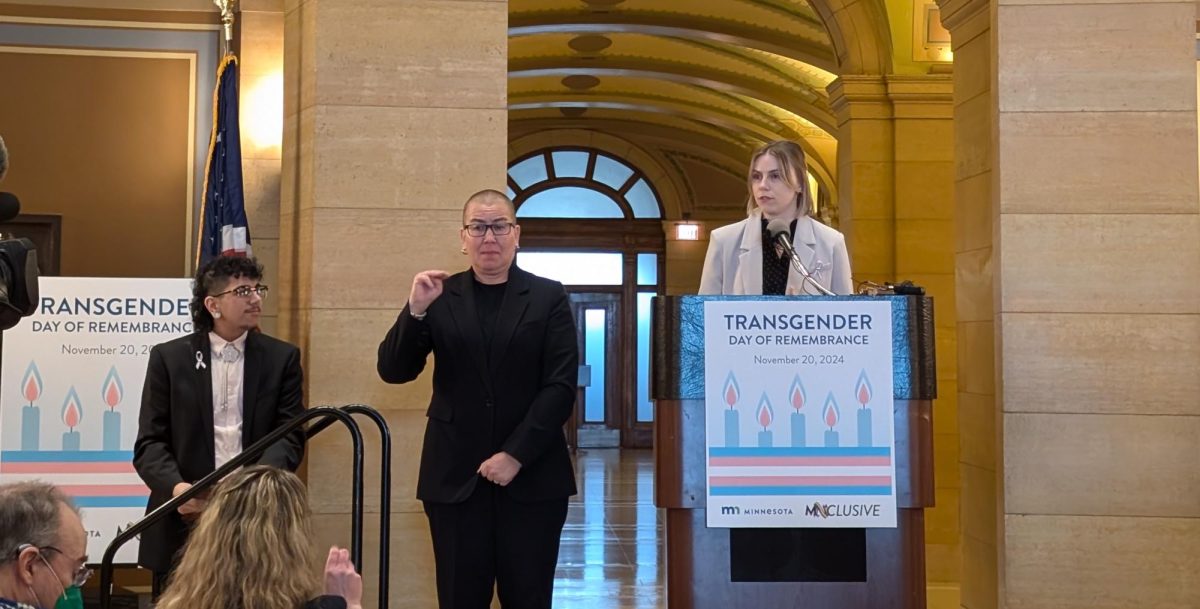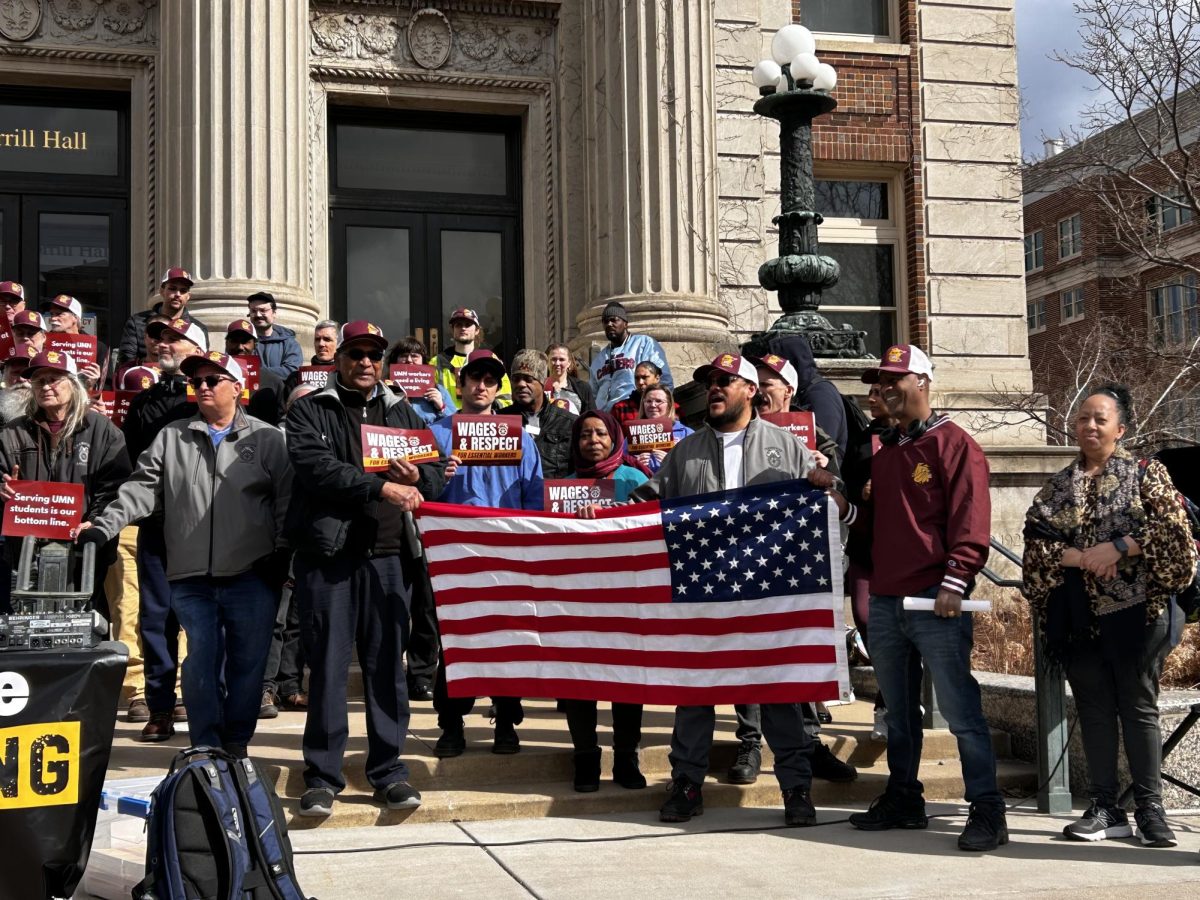The University of Minnesota is now eligible to apply for state funding to address food insecurity and receive designation as a “hunger-free campus” after Gov. Tim Walz signed a revised version of the Hunger Free Campus Act, originally passed in 2019, into law on June 26.
As part of Walz’s group of bills dedicating funding to higher education, all public and nonprofit private colleges in Minnesota are eligible to apply for up to $8,000 in grant funding to start programs to combat food insecurity on their campuses and receive the “hunger-free campus” designation. Schools with the highest number of Pell Grant-eligible students will take priority to receive funding.
Schools are considered for the “hunger-free” designation if they meet five criteria. They must have an established food pantry on campus; inform likely eligible students that they qualify for benefits such as Supplemental Nutrition Assistance Program (SNAP); hold a hunger awareness day or event each academic year; have an emergency grant program to help students with food insecurity; and establish a hunger task force.
The designation was originally drafted in 2019 by LeadMN, a student-led organization that represents two-year college students in Minnesota. The designation passed, but only included state community and technical colleges and did not include funding to help schools start programs.
“What was really interesting about not having the money was we actually saw that [the designation] was still effective,” said Matt Gutsch, the director of government relations for LeadMN.
Through follow-up assessments, LeadMN found that schools were opening food pantries, creating basic needs coalitions and holding educational events to meet the five requirements to be “hunger-free,” even without funding. The designation outlined tangible steps for colleges to follow to address food insecurity, Gutsch said.
In March, Sen. Aric Putnam, DFL-St. Cloud, reintroduced a revised version of the bill into the Minnesota Senate, asking for all public and nonprofit private colleges to be eligible for the designation.
Along with student activists from organizations such as LeadMN and Swipe Out Hunger, an organization dedicated to addressing food insecurity on college campuses nationwide, Putnam also asked the State Office of Higher Education to include funding for schools to start and sustain programs to help meet the five criteria to be considered “hunger-free.”
The revised bill now includes appropriations — over $300,000 — for schools across Minnesota to apply for grants.
“In the state legislature it is like a drop in the bucket in their budget, but it is a win because you can work from there,” said Rebecca Leighton, a health promotion specialist at Boynton Health and the founder of the Nutritious U food pantry at the University. “You are not starting at zero now. In future years, we can go back and say, ‘Look at the success of this, can we get more money?’ And so you grow it.”
The revised bill also changes the language around food assistance programs, giving direction to schools to notify students employed in work-study programs that they may qualify for programs such as SNAPs. Fewer than 40% of SNAP-eligible college students receive the nutrition benefits.
In 2019, Leighton implemented a program to screen students for SNAP eligibility and connect them with resources at the University. Since the start of the program, Leighton and her team have connected almost 2,000 students to SNAP resources.
Funding impact on Minnesota colleges
According to Boynton Health’s 2018 College Student Health Survey, 17.4% of University students reported worrying about whether their food would run out before they had the money to buy more.
However, due largely to Leighton’s work to start programs at the University such as Nutritious U, the University already meets the criteria outlined in the Hunger Free Campus Act, according to Sam Parmekar, a recent graduate of the University and the outgoing state government coordinator for the Minnesota Student Association.
Parmekar also said he is hoping that the financial incentive will encourage institutions to apply for the designation.
“We are hoping that [the funding] will encourage more schools to meet the criteria, and, of course, with the funding available that means a lot of smaller schools like our community, technical and tribal colleges will have some of that financial assistance in order to meet those criteria requirements,” Parmekar said.
It is also important that many Minnesota colleges are now eligible for the funding because many students transfer from two-year to four-year institutions, according to Gutsch.
“That food insecurity transfers with them,” Gutsch said. “It does not matter if they are at Normandale Community College and go to St. Cloud State or the [University]. If they were food insecure before they are probably still going to be food insecure.”
Leighton also said that she is hopeful that the bill will start conversations around food insecurity and pave the way for future legislation.
“It’s the logistical — it’s just money that is good, but it also means that state legislators understand that students are hungry. That is, to me, the bigger win here,” Leighton said. “The money is important, it needs to grow, we need more resources, and one of the ways to get there is to have state legislators recognize that this is an issue. It’s a first big step into addressing this problem systemically.”




















Rusty
Jul 11, 2021 at 2:43 pm
Not yours because you appear not to have any.
brn
Jul 11, 2021 at 1:23 pm
With who’s money?
Rusty
Jul 10, 2021 at 10:15 am
College should be Free to those who qualify.